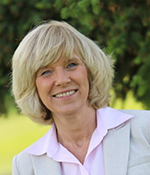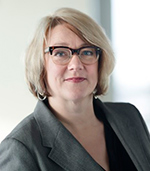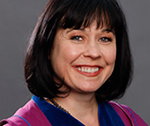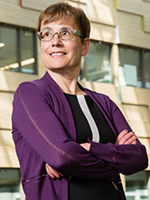Thirty years ago, a group of academics – among them deans, vice-presidents and provosts – created an organization to support women moving up the leadership ranks of postsecondary institutions.
“It really started as a networking opportunity to bring women together … to talk through problems and get advice,” says Angela Hildyard, secretary general of the Senior Women Academic Administrators of Canada, or SWAAC. A former vice-president of the University of Toronto, she joined SWAAC shortly after its founding in 1987. “I’d been put into a [leadership] role at my institution and there was no one for me to talk to … about the things I faced trying to be a woman in a senior role at a postsecondary institution,” she says.
Since then, SWAAC has grown from a small networking group into a national organization with about 280 members from universities, colleges and technical institutes coast-to-coast. The number of women in academia has also grown since then and women now comprise more than half of all undergraduate students and assistant professors. But when it comes to leadership, parity is a distant dream: for two decades now, women have made up just 20 percent of university presidents (and 30 percent of college presidents). However, Dr. Hildyard notes that the number of women serving as deans, provosts or other internal leadership roles has been increasing over time.
Regardless, enduring inequalities in the postsecondary education realm means SWAAC remains relevant three decades later, says Dr. Hildyard. A recurring feature of the organization’s annual conference is the President’s Panel, in which presidents of universities and colleges tell of how they’ve negotiated their statistically unlikely paths to the presidency.
At the 2017 annual conference held in Edmonton at the end of April, panelists included Ann Everatt of Northern Lakes College in Alberta, Melanie Humphreys of The King’s University, Annette Trimbee of the University of Winnipeg and Deborah Saucier, incoming president of MacEwan University. All four panelists took serendipitous routes to the presidency, filled with unexpected twists and turns.
How they got here

After earning a business diploma in the late 1970s, Ms. Everatt returned to her home community in Labrador and worked with a systems analyst at a mining company developing a computerized maintenance system.. She had no interest in a postsecondary career until her mother and a former high school principal got together to talk her into teaching at a community college in the evenings. “After I got over my nerves, I decided I actually liked my night job better than my day job and went back to university to study education,” she says.
Ms. Everatt’s career would lead her to colleges throughout Canada, including in Iqaluit, Calgary, Timmons and Slave Lake, where the Northern Lakes campus is located. At each juncture, she pushed aside self-doubt to take on “stretch challenges” to develop new skills. At one college, she was asked to create a strategic plan and accepted, despite having no previous experience doing one.
Like Ms. Everatt, Dr. Humphreys didn’t begin her career with a university presidency in mind. After working in student life at a Christian college in B.C., she hit a “stained glass ceiling” and realized she needed to advance her career elsewhere. When she heard that a small institution in Lithuania was creating a student life department, she threw her hat in the ring and, to her delight, got the gig.

It was a formative experience for Dr. Humphreys, who learned as much about herself as she did about the struggling eastern European country, which was in the midst of rebuilding after the fall of the Soviet Union. “I came for two years and stayed for 10,” she says. “I loved it.” The experience proved to be an important stepping stone in her leadership journey, paving the way for increasingly senior positions.

Other panelists found themselves being nudged into leadership positions by colleagues or mentors. Dr. Saucier held a Tier 1 Canada Research Chair, and had a nine-month-old baby, when the chair of her department at the University of Lethbridge begged her to take up his post as he was stepping down. Although she accepted reluctantly, she managed to succeed at all three roles.
“For me, it’s almost all about relationships,” she says. “I’ve had three or four strong male allies who’ve pushed me forward and opened doors.” Over the years, she’s risen through the ranks and begins her new role as president of MacEwan on July 1.

Dr. Trimbee was also a university researcher – a freshwater ecologist – when she took on a senior technical position with the government of Alberta. In her new role, most of her colleagues were male engineers a generation older. “It actually worked out very well for me because most of the men wanted good things for their daughters and I became everybody’s ‘daughter,’” she says.
Over time, she moved from technical roles to policy positions to civil service leadership (she served as deputy minister within several portfolios). When she was asked to consider the presidency at her alma mater, the University of Winnipeg, Dr. Trimbee knew her diverse leadership experiences made her an asset: “The advice I always give people is, ‘Put your hand up and be of value.’”
Thank you for offering a window into how these women have navigated the pathway to leadership within higher education. I am struck, however, by the need that remains for men to open doors. I am concerned that the value of women continues to be measured by male approval and that men continue to be the gatekeepers to promotion as evidenced in some of the stories. In my own career, I strive to “put my hand up and be of value” (as Dr. Annette Trimbee suggests), yet whether or not “my hand up” is seen or my contribution is valued, in many circumstances, is dependent on others. And while I continue to try to be a presence and voice in my own field, stories of women in leadership such as these are not enough to shatter the (stained) glass window that still exists.
I learned so much about leadership from Dr. Humphreys, when I, too, met a “stained glass ceiling” and was offered an opportunity for leadership at the university where she led student life in Lithuania. Higher education (and our world) will be stronger when we are fully able to realize the unique leadership contributions of people from all backgrounds.
Thanks to each of these women (and many more) for “learning in” to leadership, despite the challenges it brings. And for inspiring so many of us to step into the “arena” to lead in collaborative and innovative ways.
“It is not the critic who counts; not the [wo]man who points out how the strong [wo]man stumbles, or where the doer of deeds could have done them better. The credit belongs to the [wo]man who is actually in the arena, whose face is marred by dust and sweat and blood; who strives valiantly; who errs, who comes short again and again, because there is no effort without error and shortcoming; but who does actually strive to do the deeds; who knows great enthusiasms, the great devotions; who spends [her]himself in a worthy cause; who at the best knows in the end the triumph of high achievement, and who at the worst, if [s]he fails, at least fails while daring greatly, so that [her]his place shall never be with those cold and timid souls who neither know victory nor defeat.” Theodore Roosevelt
With respect, may I ask why, at a university, should the gauge for career advancement be the attaining of a senior administrative position? I would have thought that the administrative track (chair, dean, etc) is rather distinct from the academic track (asst, assoc, full professor). By that I simply mean that an administration appointment does not represent a ‘natural advancement’ over an academic one, even though the former requires the latter. I know of numerous colleagues who were encouraged to compete for a vacant senior administrative post, but who would not even consider it because the sacrifice would have been essentially giving up the academic activities that attracted them to academia in the first place. If there is any validity to my perspective here, why should we be assessing the career progress of female academics relative to that of male academics from the proportion of administration posts held by women? I’m not pretending by this that female academics don’t face at least some challenges in career advancement that men don’t, however that’s measured. I just wonder whether there are better means of assessing those challenges other than from the proportion of senior administration posts held by women.
Would anyone care to enlighten me on this?
This is a great and important article, but I do feel the need to voice that the final important sentence of the introduction before reading the profiles of the women states “All four panelists took serendipitous routes to the presidency, filled with unexpected twists and turns.”
Serendipitous. By chance.
In the profiles I read very little evidence of opportunities given by chance, but given because of the women’s hard work and initiative. With this small statement you take credit off of the women and give credit to the men who brought them here or simply give credit to luck and chance and timing and I don’t think any of these tell the real story of these intelligent powerful women.
It is an all-too-common reaction to downplay the efforts of women, and in fact we do it to ourselves, but I think it was an especially sad misstep for a writer to make this mistake in this article, and for no editors to catch it.